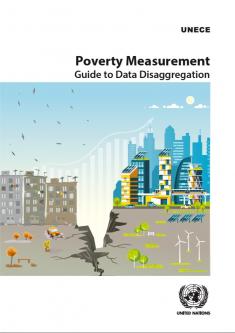
This publication provides guidance on applying various approaches to data disaggregation for measuring poverty and aims to improve the international comparability of poverty statistics. Regardless of how accurate the national measures of poverty are, their usefulness will be limited if they mask existing disparities within societies.
The introductory Chapter 1 lays down the motivation behind the choice of disaggregation for poverty measurement.
Chapter 2 suggests a standard set of core variables for poverty disaggregation with the purpose to enhance further international harmonisation. Reference questions are provided to illustrate the implementation of data disaggregation in practice.
Chapter 3 discusses methods to adapt data collection in order to reach beyond the traditional and established survey methodologies and capture the groups that are most exposed to the risk of poverty.
Chapter 4 addresses the need for assessment of data accuracy and the quality of statistical processes as well as their continuous improvement. The chapter discusses how to improve response rates and sampling precision in the measurement of poverty among relevant social groups.
Chapter 5 living across regions and household circumstances. It provides analysis on measurement issues such as social transfers in kind, disability cost or high medical expenditures, housing wealth, imputed rent, assets poverty and unequal sharing of resources within households, and
multi-dimensional poverty.
Chapter 6 presents an overview of the areas envisaged for further work.
The publication mainly targets national statistical authorities and provides useful information for policymakers, researchers and other users of poverty data.